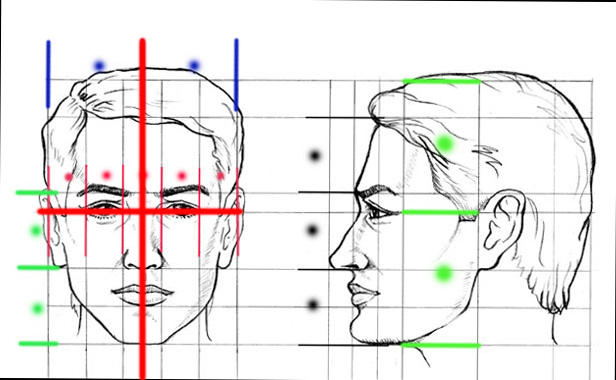
When drawing a portrait, one of the most common challenges is maintaining proper alignment between the eyes, nose, and mouth. Many people tend to draw one eye higher than the other or place the nose off-center, which disrupts the natural structure of the face. An effective way to prevent this is by using an imaginary cross as a reference. The horizontal line should pass through both eyes, while the vertical line should run through the center of the nose, mouth, and chin. Keeping this cross in mind throughout the drawing process helps ensure correct proportions and symmetry, which are essential for capturing the structure of the face accurately.
Since these kinds of mistakes are common, it takes time and practice to develop the habit of consistently checking alignment. As I always say, theory should be like a whisper in our ears—gently guiding us at all times. Understanding the structure of the face is not just about memorizing proportions but also about observing how features interact with one another.
In the image, the red lines indicate the axes that must always be considered, while the colored dots mark areas of equal size. These visual guides are essential for maintaining balance and proportion in your portrait. For example, the distance between the eyes is typically equal to the width of one eye, and the space from the bottom of the nose to the mouth is often about one-third the length of the nose. These small but critical measurements are key to understanding the structure of the face and achieving a realistic likeness.
Another helpful technique is to divide the face into thirds: the hairline to the brow, the brow to the base of the nose, and the base of the nose to the chin. This “rule of thirds” can serve as a foundational guide for placing facial features accurately. Additionally, paying attention to the angles and curves of the face—such as the slope of the forehead, the curve of the jawline, and the shape of the cheekbones—can further enhance the realism of your portrait. These elements are all part of the structure of the face, and mastering them will help you create more lifelike drawings.
It’s also important to consider the overall tilt and perspective of the head. A common mistake is drawing the face as if it’s perfectly frontal, even when the head is slightly turned or tilted. Observing the direction of the head and adjusting the axes accordingly will help you capture the correct perspective. For instance, if the head is tilted to one side, the horizontal axis (eye line) will also tilt, and the vertical axis will curve slightly to follow the structure of the face. This attention to perspective is crucial for creating dynamic and realistic portraits.
Finally, don’t underestimate the power of observation. Study reference images or real-life subjects closely, noting the subtle variations in alignment and proportion that make each face unique. Over time, with consistent practice and attention to these details, you’ll develop a stronger intuition for portrait drawing. By focusing on the structure of the face, you’ll not only improve your technical skills but also gain a deeper appreciation for the complexity and beauty of human features.